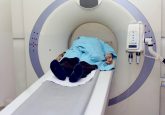Intensity-modulated radiation therapy for patients with rectal cancer

Intensity-modulated radiation therapy
The introduction of computed tomography simulation and computer-based treatment planning in radiotherapy provided improved definition of target and normal structures, and lead to the era of 3D conformal therapy. However, it was the modern generation of linear accelerators, equipped with dynamic multileaf collimators, that truly revolutionized radiotherapy. Multileaf collimators consist of multiple, individually motorized leaves that are driven by sophisticated computerized algorithms, moving them in and out of the beam’s path, thereby modulating the beam’s intensity. These technological advancements precipitated the development of intensity-modulated radiotherapy (IMRT), enabling highly conformal radiation delivery with dose sculpting of target volumes and a rapid dose fall-off for the sparing of normal structures, or ‘organs at risk’ (OAR).
Cumulative data on clinical tolerance and dose–effect correlations have allowed the definition of specific tolerance doses for OAR. Respecting these OAR dose limits while delivering the appropriate therapeutic dose to the clinical target volume (CTV) has been facilitated by the pairing of IMRT with image-guided radiotherapy, which allows for accurate tumor and OAR localization during radiotherapy planning and delivery. Ultimately, this has lead to an improvement in local tumor control in a variety of different tumor sites, while reducing the dose to OAR, thus diminishing radiation-related toxicity.
Click here to view full article.





